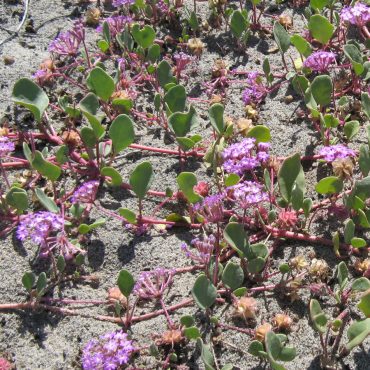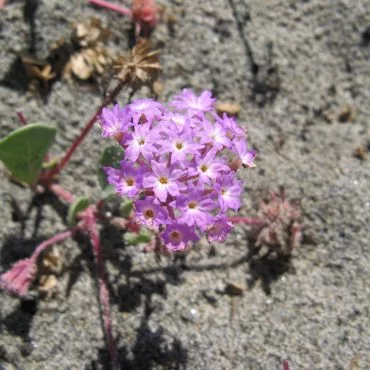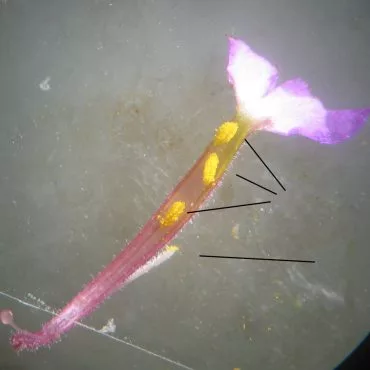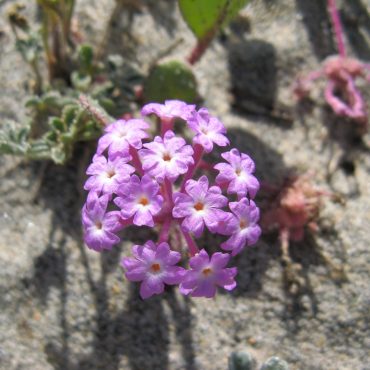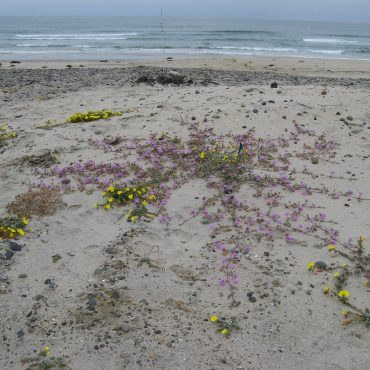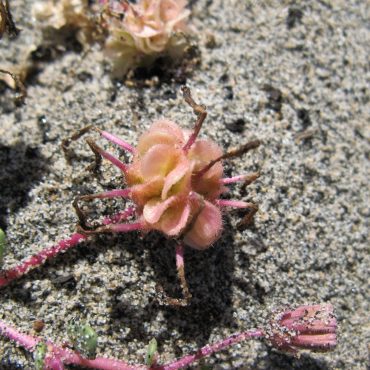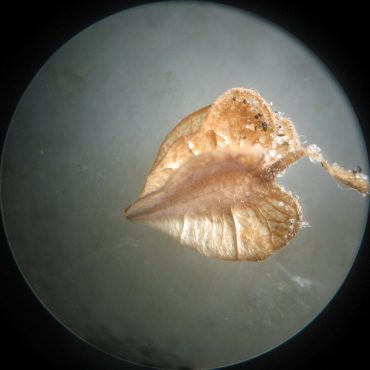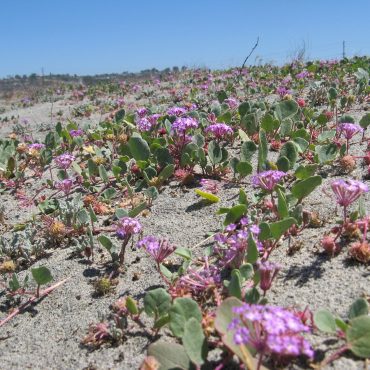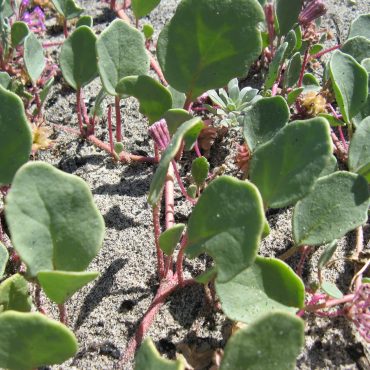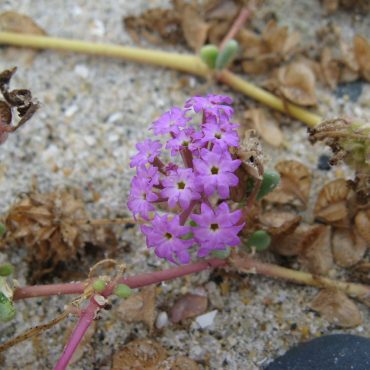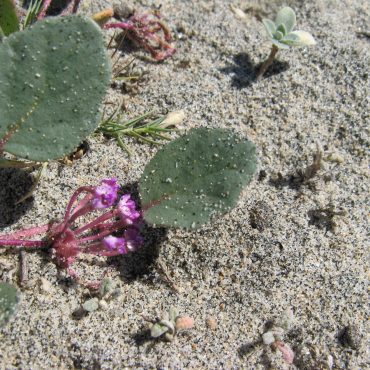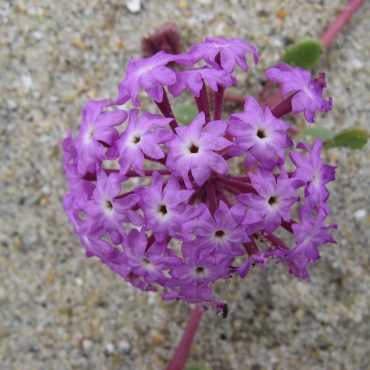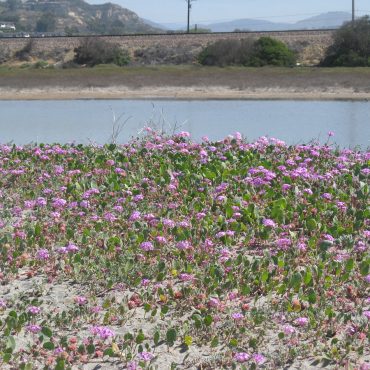Beach sand verbena is a highly variable species, occasionally hybridizing with other Abronia species. The plant is a low growing perennial (sometimes annual) with several stems from a tap root. The plant may be smooth or covered with sticky hairs,290 and often has sand grains stuck to it. The main stems sprawl along the ground for a meter or more, often forked, occasionally buried in sand. Leaves are somewhat thick and fleshy, oval or elliptic in shape with smooth margins, up to 2½ inches (6 cm) long and two inches (5 cm) wide. Leaves are opposite on the stem with the paired leaves of unequal sizes, often held vertically.
The bright flowers occur in globular clusters. There are usually 10 – 30 flowers per cluster originating from a single point (umbels); all flowers open at the same time. Below each cluster are five or six small bracts that are magenta to green in color and covered with sticky glandular hairs. Flowers lack petals and five bright pink to magenta sepals resemble petals and are covered with glandular hairs. Sepals are united at their bases into a long flower tube, flared at the top into five lobes, each lobe usually split into two smaller lobes. The eye of the tube is pale pink or white. The flower is bisexual and about ½ inch (1.3 mm) long. The stamens and pistil are hidden within the flower tube. The stamen filaments are fused to the floral cup for most of their length. Anthers are vivid yellow with bright yellow pollen. The pistil consists of a superior one-chambered ovary, a light-pink brushy style with a slightly wider, whitish stigma that extends only midway up the floral tube.
The plant often dies back during the driest part of the year, but given adequate moisture, leaves and flowers may be found during any season.1,7
Fruits form loose clusters of one-seeded, dry capsules. Each capsule is surrounded by usually three conspicuous papery brown wings, derived from the base of the floral tube.


